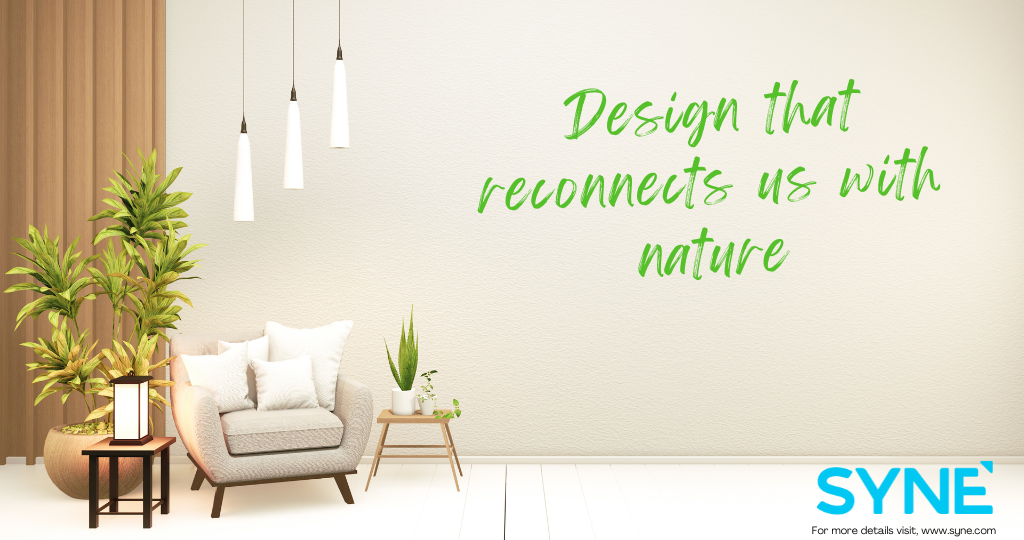Biophilic Design - Design that Reconnects us with Nature
Housing
CREATED
14 Jul 2023
syne.com/story/biophilic-design-desi...
Biophilic design is an approach that aims to reconnect people with nature by incorporating natural elements and processes into the built environment. It recognizes the innate human connection with nature and seeks to enhance the well-being and productivity of occupants by creating spaces that mimic or incorporate elements of the natural world. It can be implemented in various ways within green buildings, and it contributes to their overall sustainability.
Improved Well-being: Biophilic design has been shown to have positive effects on human health and well-being. Access to natural light, views of nature, and the presence of indoor plants can reduce stress, enhance cognitive function, improve mood, and promote overall well-being among building occupants.
Increased Productivity: Studies have demonstrated that incorporating biophilic elements in the workplace can lead to increased productivity and creativity. Spaces that offer natural light, views of greenery, and access to outdoor areas can inspire and motivate occupants, resulting in higher levels of engagement and performance.
Energy Efficiency: Biophilic design principles can contribute to energy efficiency in buildings. For example, incorporating day lighting strategies reduces the need for artificial lighting, leading to energy savings. Additionally, using natural ventilation techniques, such as designing spaces to take advantage of natural airflow, can reduce reliance on mechanical ventilation systems and decrease energy consumption.
Sustainable Materials: Biophilic design often emphasizes the use of sustainable materials. Incorporating natural materials, such as responsibly sourced wood, stone, or natural fibres, reduces the reliance on non-renewable resources and minimizes the environmental impact associated with the extraction and production of building materials.
Connection to Nature: By creating spaces that provide a connection to nature, biophilic design promotes a sense of stewardship and encourages sustainable behaviours. People who feel connected to nature are more likely to engage in environmentally conscious actions, such as conserving resources and reducing waste.
Biophilic design can reduce stress, improve cognitive function and creativity, improve our well-being and expedite healing; as the world population continues to urbanize, these qualities are ever more important. The science supporting biophilic design is still emerging.
Overall, it enhances the green building concept by integrating nature into the built environment, improving occupant well-being, increasing energy efficiency, and fostering a deeper connection to the natural world. By incorporating these design principles, green buildings can create sustainable, healthy, and inspiring spaces that benefit both occupants and the environment.




View Comments